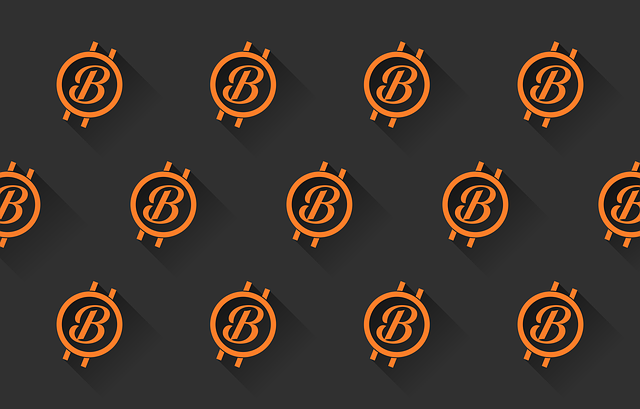
Crypto’s Latest Big Buzz – But Will It Really Be Here to Stay? (Operation Ed)
The crypto industry has come a long way since the 2017 ICO bubble, when two schools of thought existed: digital currencies were the next big thing or an outright scam.
These days, with a $1.5 trillion global market, you won’t find many ideas that cryptocurrency will be the next big thing, isn’t it already big? As for those who claim this is a nasty scam, many are falling apart as many corporate attackers enter the Web3 space, while others are becoming increasingly desensitized.
One of the most talked about topics in crypto is the tokenization of real-world assets (RWAs), especially as the asset class begins to mature and blockchain adoption increases.
What if traditional investments (property, art, gold, oil, treasury bonds, luxury watches) could be tokenized and added to the blockchain? Don’t these tangible goods enjoy all the benefits that people praise when discussing Bitcoin, Ethereum or USDC? That means fast solution, cross-border simplicity, transparency and security.
Bringing RWAs to Blockchain
RWAs are not a modern phenomenon: The concept of replacing paper trading with wallet addresses has been around since the ICO hype of 2017. An article published on Nasdaq in March of the same year outlined several benefits to be gained from tokenizing RWAs. significant overheads of Web2 tradfi systems, which made it easier using the old model.
Naturally, the sector has progressed a lot in the intervening period. Indeed, the price of BTC more than tripled between 2017 and 2021, while Tesla, MicroStrategy, and surprisingly the government of El Salvador have since added billions of dollars of crypto to their balances.
Moreover, the emergence of the decentralized finance (DeFi) industry and its trusted financial protocols for trading, lending, and savings have proliferated the use cases of digital assets and brought an influx of investor capital to the party.
When RWAs were first discussed in 2017, DeFi didn’t actually exist. But the latest rumors about real-world assets always reference the industry, because it will inevitably be DeFi protocols (among others) that add support for RWAs to their interfaces.
Indeed, this is already happening: Decentralized networks like Centrifuge enable the tokenization of assets such as royalties, invoices, and real estate bridge loans, while Ondo Finance has its own U.S. dollar Yield Token (USDY), a tokenized banknote backed by the short-term U.S. has. Treasury and bank demand deposits.
With DeFi returns falling dramatically since the days of the rising bull market, the possibility of tokenized RWAs offers a new source of potential returns in DeFi, giving holders of fine art, commodities, stocks, derivatives, precious metals, and property a chance. They use their liquidity to generate a return.
Why Should We tokenize Tangible Assets?
The benefits of RWA will of course flow in both directions: The arrival of established asset classes in DeFi, often viewed as the Wild West for investors, will bring stability to the sector while strengthening its credibility. Billions of dollars worth of crypto liquidity will also flow into RWAs, and top-performing digital currencies like Bitcoin will suddenly represent an alternative form of collateral for tangible assets.
Moreover, more businesses will be exposed to DeFi and the possibility of converting real-world assets into fractional ownership. For example, an investor interested in purchasing property may not be able to afford a mansion, but if that mansion is split into 500 tokens and its ownership distributed among a network of investors, it could suddenly become viable. The same goes for a supercar, a yacht or a Cessna; you get the idea.
At the Digital Asset Week held recently in London, many leading global financial institutions, including BlackRock and Standard Chartered, announced their action plans in the Web3 space. According to Forbes fintech correspondent Lawrence Wintermeyer, one of the hot topics was the tokenization of precious metals, property and private markets; this issue “has come back into focus after a hiatus of several years due to the impact of high interest rates.”
According to Wintermeyer, private protocols and networks will absorb RWAs because public protocols “may not withstand the scrutiny of many jurisdictions’ laws and regulations.”
So what needs to happen for real-world assets to become a meaningful economic driver for Web3, rather than riding the wave of excitement before peaking and falling spectacularly like the jpeg NFTs before them?
Current implementation of RWAs in the wild will need to be seen as a success if organizations are not to move away from this idea and revert to old, reliable ways of doing business. Current implementations include JP Morgan’s Tokenized Collateral Network (TCN), a proprietary blockchain application that allows a tokenized representation of collateral assets (such as tokenized Money Market Fund shares) to be transferred on-chain. In October, TCN completed its first transaction between BlackRock and Barclays.
Elsewhere, HSBC has launched its own gold tokenization platform, HSBC Evolve, which allows institutional investors to purchase tokens representing physical gold (as well as silver, palladium and platinum) held in a London vault. Of course, precious metals have already been tokenized by many platforms, including Bitgild and pax gold. But the arrival of a major player like HSBC represents yet another validation of blockchain for investors who tend to stay away from cryptocurrency in favor of the Web2 virtual space.
Real-world assets are rapidly entering blockchain, whether tokenized on Web3 native decentralized protocols or private networks built by traditional pioneers. Amid growing institutional interest from institutions like Fidelity, Santander, and BlackRock, and a desire for strong returns from investors disheartened by DeFi’s falling rates, RWAs look set to continue gaining traction. It’s little wonder that Boston Consulting Group expects the on-chain RWA market to reach $16 trillion by 2030.
Author biography
Zaid Ismail, COO/CBDO of Mintlayer, is at the forefront of integrating blockchain technology for real-world asset tokenization and opening up Bitcoin to DeFi. A visionary with deep roots in Silicon Valley’s tech scene and New Zealand’s healthcare industry, Zaid now channels his expertise into Dubai’s dynamic environment. His journey, marked by leading roles in enterprise sales, management and corporate development, reflects a keen insight into emerging trends and an entrepreneurial spirit. Zaid’s pivotal role in AI-focused projects like HeartLab underscores his commitment to innovation. At Mintlayer, he believes in the power of technology to reshape the future of global markets, imagining and working towards a future where blockchain technology democratizes access to real-world asset investing.
SPECIAL OFFER (Sponsored)
binance $100 Free (Exclusive): Use this link to sign up and get $100 free and 10% discounted fee on Binance Futures for your first month (conditions).

#Cryptos #Latest #Big #Buzz #Stay #Operation

